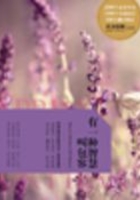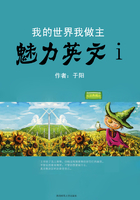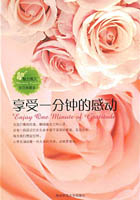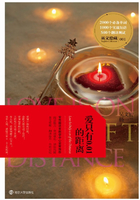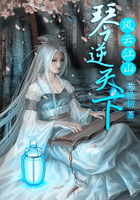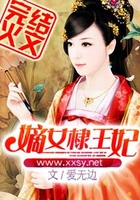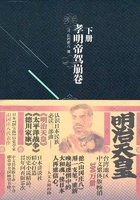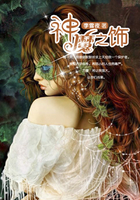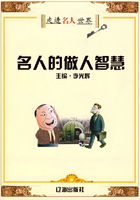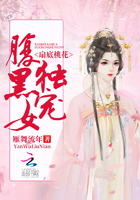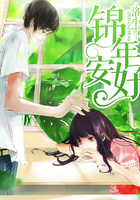Now, more and more Chinese and foreigners start studying Confucian culture。
现在,越来越多的中国人和外国人开始学习儒家文化。
The thoughts of using rites and music to educate people received plenty of explanation among works of later Confucian scholars。
礼乐教化思想在后世儒家学说中得到了充分的表述。
Mencius was the most famous scholar of the Confucian School after Confucius。
孟子是我国古代继孔子之后最著名的儒家学者。
The most obvious feature of the Confucian culture structurally is ethic centrality。
儒家文化在结构上最大的特点是伦理中心主义。
Ancient people—oriented doctrines are often associated with the Confucian School。
一提到古代民本主义,人们往往会把它与儒家联系起来。
Let’s Talk!
开始交流吧!
Emily: How about traditional Chinese culture?
艾米丽:中国传统的文化怎么样?
Mike: The 5000-year-long civilization is the source of pride of every Chinese。
麦克:中国人以五千年的文明为骄傲。
Emily: I know Confucius and Dr。 Sun Yatsen are the representatives。
艾米丽:我知道孔子和孙中山的思想。
Mike: Yes, we can see the traditional Chinese culture presents many precious ideas and qualities。
麦克:是的,我们看到中国传统的文化呈现出许多宝贵的思想和品质。
Emily: They lay stress on the importance of kindness and the idea that the world is for all。
艾米丽:他们提出仁爱和天下为公的思想。
Mike: These thoughts have survived many vicissitudes。
麦克:这些思想历经沧桑。
Emily: I’ve been told Confucius was a great philosopher in ancient China!
艾米丽:我听说孔子是中国古代伟大的哲学家。
Mike: Thought of Confucius in Chinese history of great significance, has already affected more than two thousand years in China, Confucius’s position in history is also very high。
孔子的思想在中国历史上具有重大意义,已经影响了中国两千多年,孔子在历史上的地位也很高。
Emily: I heard that Confucius was 196。8 cm tall。
艾米丽:听说孔子身高196。8cm。
Mike: It is rare for such a height in ancient times。
麦克:古时候的人这样的身材很少见啊。
Emily: Are there some historic records?
艾米丽:有史料记载吗?
Mike: There was a history record in Confucius of Sima Qian。
麦克:司马迁的《孔子世家》里有记载。
Emily: May be the measuring tools at that time were different。
艾米丽:可能古代的测量工具与今天的不同吧。
Mike: In any case, Confucius was a typical strong man of Shangdong。
麦克:但不管怎样,孔子肯定是个典型的山东大汉。
Emily: Maybe。
艾米丽:也许吧。
the Imperial Palace
故宫
故宫位于北京市中心,旧称紫禁城。是明、清两代的皇宫,无与伦比的古代建筑杰作,世界现存最大、最完整的木质结构的古建筑群。来到中国怎能不去故宫一游呢,现在就带你走进故宫,畅游一番。
Realize the Imperial Palace
认识故宫
1故宫简介及影响
The Imperial Palace, popularly known as the Forbidden City, which has witnessed twenty-four emperors of the Ming and Qing Dynasties ruling China for some 500 years—from1420 to 1911, is the most splendid architectural complex in the world, also the brightest pearl in the human history。
Ancient Chinese people fully displayed their wisdom in building the Forbidden City。 The Forbidden City is surrounded by 10-metre high walls and a 52-metre wide moat。 Measuring 961 meters from north to south and 753 meters from east to west, it covers an area of 720,000 square meters。 Each of the four sides is pierced by a gate, the Meridian Gate (Wu men) on the south and the Gate of Spiritual Valor (Shenwu men) on the north side, being used as the entrance and exit by tourists today。 Once inside, visitors will see a succession of halls and palaces spreading out on either side of an invisible central axis。 It is a magnificent sight, the buildings with glowing yellow roofs against vermilion walls, not to mention their painted ridges and carved beams, all contributing to the sumptuous effect。
Known as the Outer Court, the southern portion of the Forbidden City centers is on the halls of Supreme Harmony, Central Harmony, and Preserving Harmony。 These are flanked by the halls of Literary Glory and Military Eminence。 It was here that the emperor held court and conducted his grand audiences。
Mirroring this arrangement is the Inner Court at the northern end of the Forbidden City, with the Palace of Heavenly Purity, the Hall of Union, and the Palace of Earthly Tranquility straddling the central axis, surrounded by the Six Palaces of the East and West and the Imperial Garden to the north。 Other major buildings include the halls for Worshipping Ancestors and of Imperial Splendor on the east, and the Hall of Mental Cultivation, and the Palace of Benevolent Tranquility on the west。 These contain not only the residences of the emperor and his empress, consorts and concubines but also the venues for religious rites and administrative activities。
In total, the buildings of the two courts account for an area of some 163,000 square meters。 These were laid out precisely in accordance with a code of architectural hierarchy, which designated specific features to reflect the paramount authority and status of the emperor。 No ordinary mortal would have been allowed or even dared to come within close proximity of these buildings。
Today, the Forbidden Palace is open to the public。 Splendid paintings on the royal architecture, grand and deluxe halls, and surprisingly magnificent treasures will be displayed before you。
2故宫的著名景点
(1)the three Harmony
Inside the Hall of Supreme gate, there are the Hall of Supreme Harmong palace, the Hall of Complete Harmony palace and the Hall of Preserving Harmony palace。 These three palaces are the maintain architecture of the palace museum。
The Hall of Supreme Harmony太和殿
The Hall of Complete Harmony中和殿
The Hall of Preserving Harmony保和殿
(2)the four entrances
There are four entrances into the city。 The Meridian Gate to the south, the Shenwu Gate (Gate of Military Prowess) to the north, the Donghua to the east, and the Xihua Gate to the west。 The Forbidden City was surrounded by a ten meter high city wall and enclosed by a moat of 52 meters wide。 At each corner of the city wall, there is a magnificent watchtower。 All of them were used for protecting the emperor and his imperial family。
Wu men午门Shenwu men神武门
Donghua men东华门Xihua men西华门
故宫作为中国历史的代表,有着深刻的封建韵味。它作为建筑的代表,完全体现了中国劳动人民的智慧与勤劳。它经历着中国的兴衰荣辱,伴随着中国走过每一个阶段。所以一提到故宫,每个中国人都会有种骄傲的感情,它在那里展示着曾经的辉煌,却也提醒着当日的没落。
Key words & Sentences
关键词句全知道
The Imperial Palace, also called the Forbidden City, was the home of 24 emperors from the mid-Ming Dynasty to the end of the Qing Dynasty。
故宫又名紫禁城,从明朝中期到清朝末,有24位皇帝在这里生活过。
A visit to the Forbidden City will enrich the visitors’ knowledge of history, economy, politics, arts as well as architecture in ancient China。
参观故宫会使我们对古代中国的历史、经济、政治、艺术和建筑有一个更深刻的了解。

